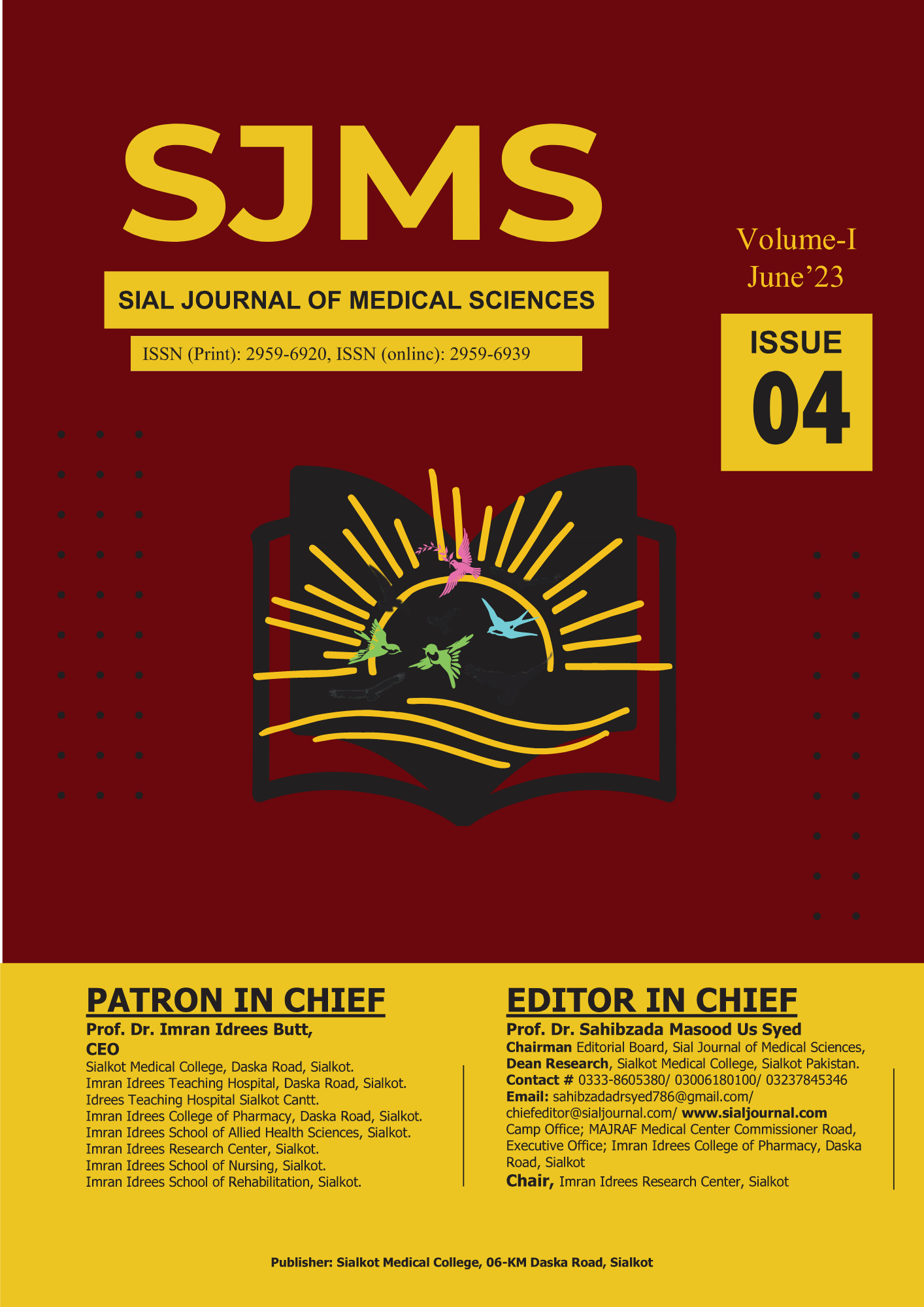KAP STUDY OF EATING JUNK FOOD WITH REFERENCE TO BMI AMONG STUDENTS OF SIALKOT MEDICAL COLLEGE (SMC), SIALKOT
DOI:
https://doi.org/10.60127/sjms.v1i4.18Keywords:
Energy Balance., UHT, variables, bar graph., ConsentAbstract
To assess the eating habits of students and their effect on BMI along with other activities like exerciseCross-Sectional StudySystematic Random Sampling Sialkot Medical College, Sialkot, Punjab, Pakistan Questionnaires were provided to students, they were distributed in each class on the basis of systematic random sampling to eliminate Selection Bias.Approval from the ethical committee of SMC was takenConsent was taken and confidentiality was assured without asking participants’ names. Responses were to be filled in the format Agree, Partial Agree, or DisagreeThree parameters-KAP- Knowledge, Attitude, and Practice were asked separately in Questionnaires Other variables which influenced BMI like exercise, and frequency of eating healthy food like vegetables were asked in provided questionnaires 92% Response Rate was obtainedThose who consumed fast food once a week had average BMI of 20.7.
- Normal (18 to 9)
- Overweight (25 to30) (>30 are Obese)
- Two times a week: 23 (Normal BMI)
- Three times a week:24 (Normal BMI) Four times a week:27 (Overweight)
- More than four times a week:29 (Overweight)They were presented with pie charts and bars graphs respectively Students had adequate Knowledge i.e. (82.6%) about detrimental effects of fast food on health and development of cardiovascular problems and Diabetes. BMI levels were proportional to the frequency of eating junk food.
Downloads
Published
Issue
Section
License
Authors retain the copyright to their work and grant the Sial Journal of Medical Sciences the right of first publication under a Creative Commons Attribution 4.0 International (CC BY 4.0) license. This license allows others to share, adapt, and reuse the work for any purpose, including commercial use, as long as appropriate credit is given to the original authors and the journal.
By submitting a manuscript, authors confirm that the work has not been published previously (except as an abstract, lecture, or academic thesis), is not under review elsewhere, and has been approved by all authors and relevant authorities. Once accepted, the article will be openly accessible under the CC BY 4.0 license, ensuring wide dissemination and reuse with proper attribution.







